-
PHONE
+39 0522 964949 -
PRICE LIST
Ask for the price list
The removable partial denture is anchored to natural teeth to replace the missing teeth effectively.
The removable partial denture is made starting with the classic scan of the model or starting directly from the digital impression made directly in the mouth of the patient with the help of an intraoral scanner.
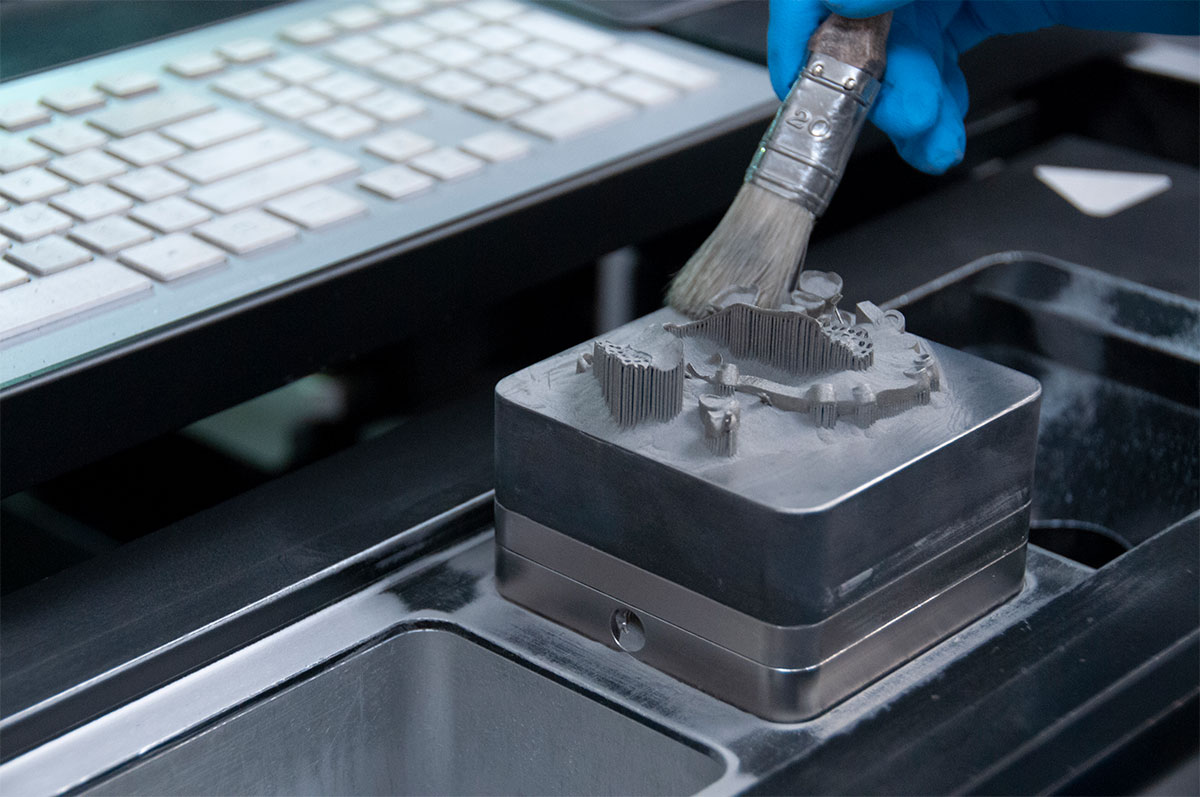
The removable partial denture is a very cost-effective solution compared to other types of prosthesis. It can be made quickly and ensures stability, good esthetics, functionality and long life; it can also be used as a temporary prosthesis for work that requires a long preparation of the prosthetic part, being more comfortable than a temporary denture made of resin.
The removable partial denture can be combined with a fixed prosthesis: the anchorage on the crowns occurs in this case by means of precision attachments, offering an alternative to implants.
The digital revolution has brought multiple advantages in the field of removable partial denture design and manufacturing, by reducing working time and simplifying the whole process.
Today, laboratories have the opportunity to work digitally and to commission a removable partial denture to a service for digital production. They can dispense with need to purchase coatings, alloys, waxes, and duplication materials, generating benefits not only in terms of simplification of the process, but also of costs.
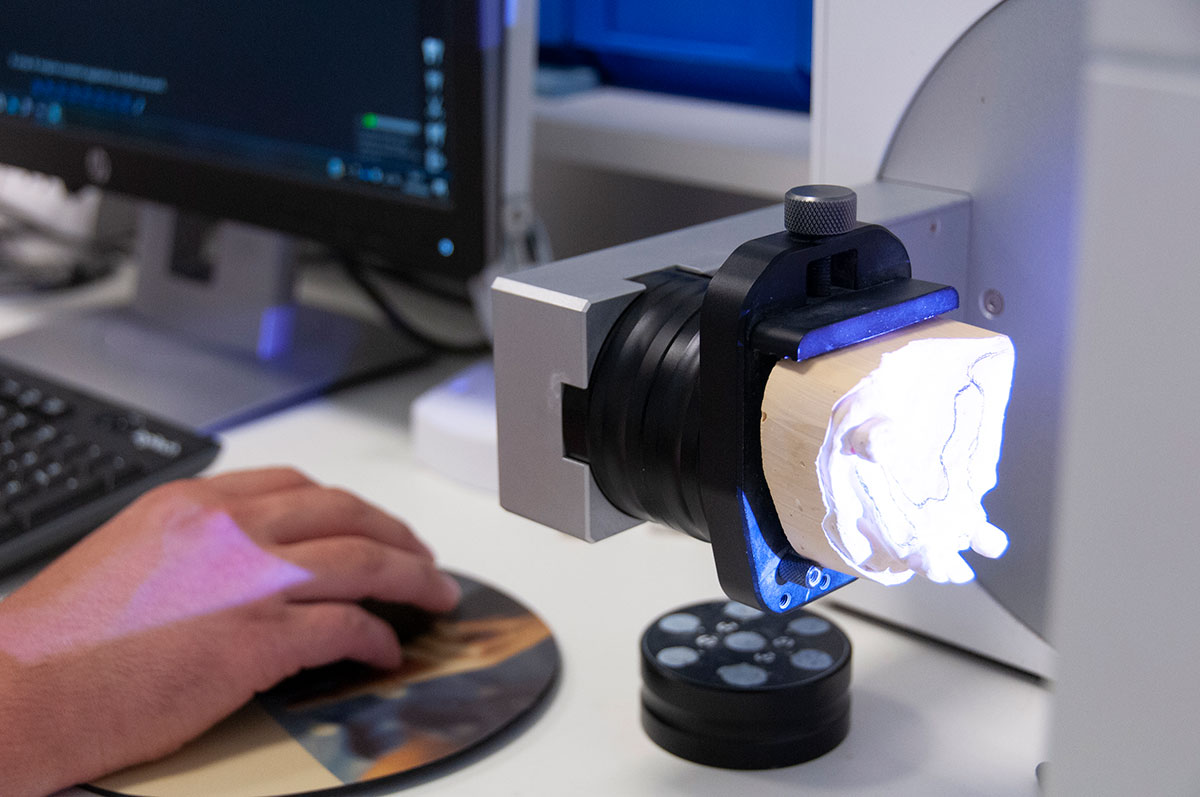
Alloys used for the production of removable partial dentures fabricated by Laser Melting, although less widespread than those used in the traditional process, have been selected for their superior stability and elasticity, characteristics that are enhanced by a special heat treatment for stabilization.
Laser Melting manufacturing is extremely precise, improving the retention and allowing excellent results even in cases where the undercut zone to be used for the anchor is not particularly wide.
In the case of traditional analog production, once the plaster model is obtained, it is necessary to block out all undercut zones with calibrated waxes or resins. The same must be done for concavities, because the mesh that will incorporate the resin should not be in contact with the patient's mucosa.
These are manual machining processes that require precision and time, because they involve extremely small thicknesses (0.5-0.6 mm). Subsequently, the pattern must be duplicated: it is put in a flask where a special gelatin is poured, at the correct temperature, in order not to melt the wax. The gelatin thus creates the duplicate which is then glued with a refractory coating material; the wax is molded on the coating material, to be cut and trimmed with the spatula, the mesh is applied and then the wax molds are joined in the shape of the hooks. The pattern is pinned, and after further application of refractory material, it is put in the furnace to melt the wax. After these steps you can proceed with melting.
As it appears obvious, the procedure is complex and requires not only time, but also knowing the rising temperature of the furnace, thermal expansion and contraction of the coating so as to have a melting process that is as accurate as possible.
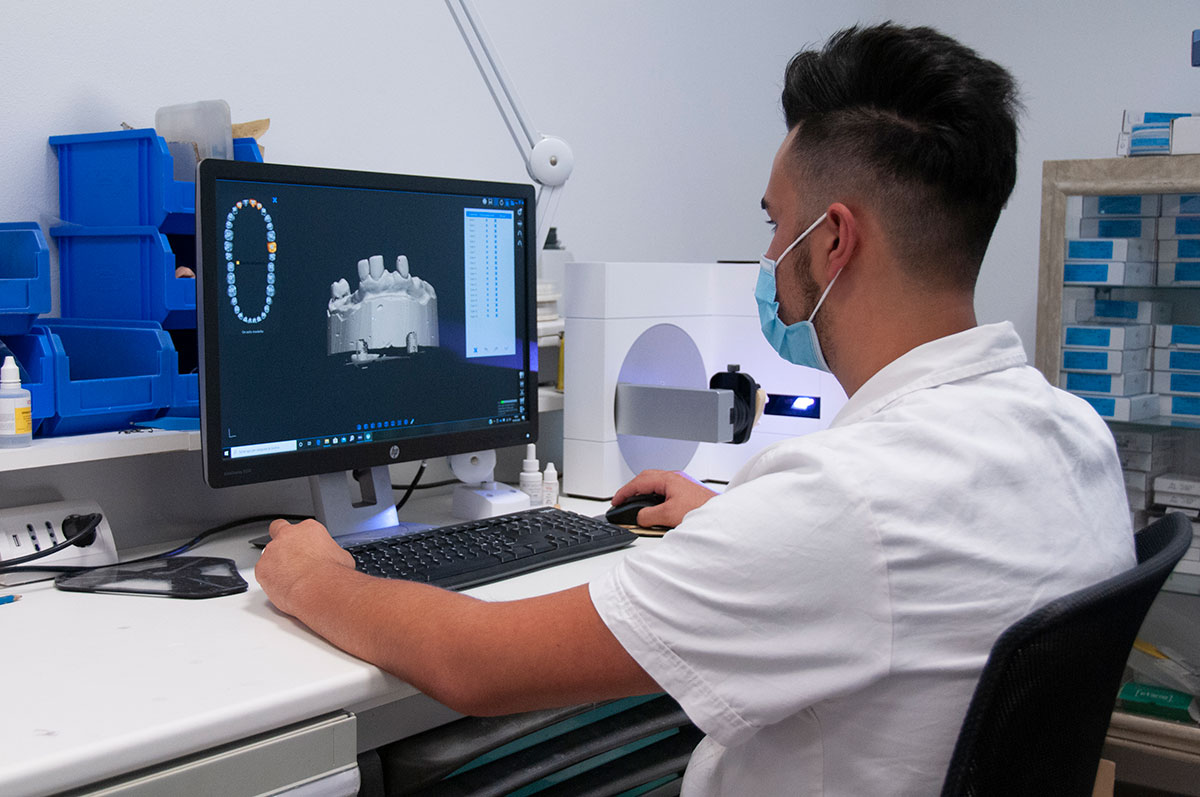 >
>
Using digital technologies, you can start machining immediately, starting from a scan of the model or an intraoral scan.
Via the software you can block out the undercut zones, select the design of the plate and the position of the meshes on the concavity, draw the hook choosing the type of retention to connect it to the plate.
At this point, the file is ready to be printed in 3D, with a sharp reduction in design and production time, but also in manual labor and materials to be used.
Proxera also offers digital DESIGN of partial dentures: specialist dental technicians who are up to date with the latest trends in the field will deal with the CAD design of the prosthesis taking care of all the stages of production until finishing.
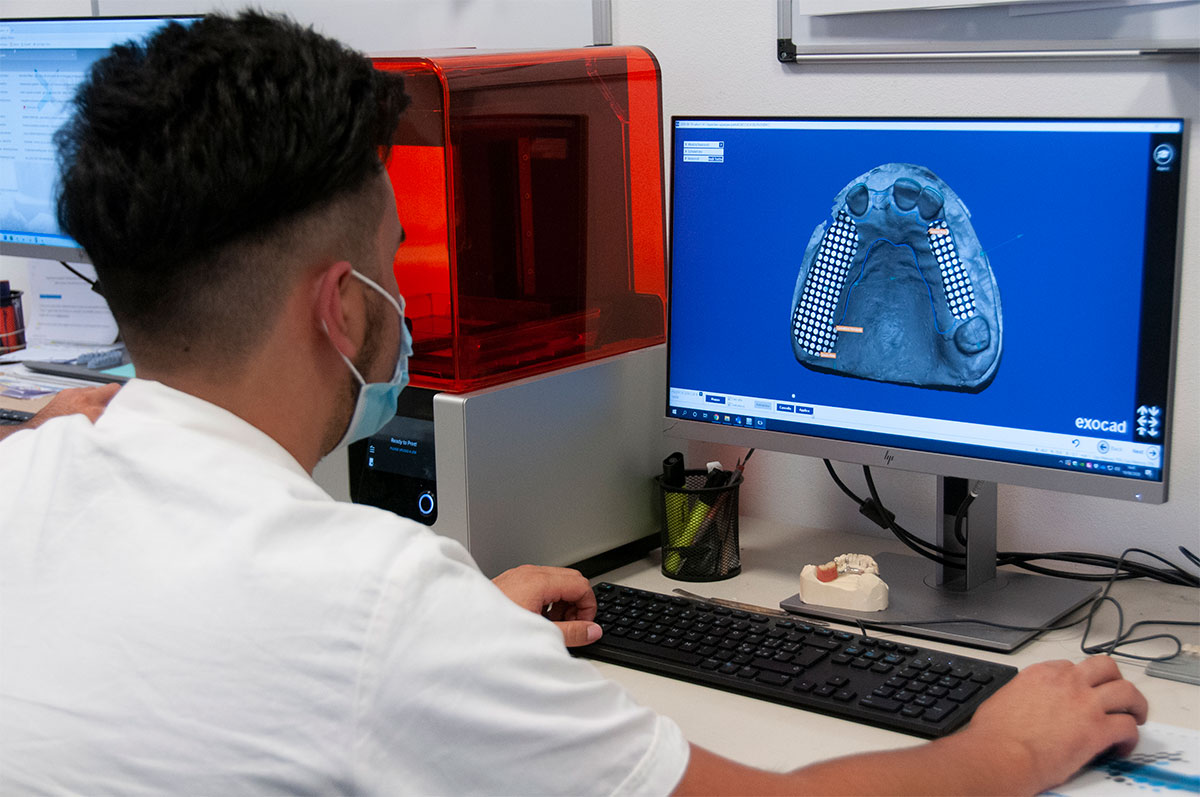
Depending on the needs of the laboratory, the design of the partial denture can begin:
Once the scans have been obtained, the partial denture is designed following the instructions provided by the customer and the safety parameters for Laser Melting technology, adopting all the precautions necessary for a perfect result.
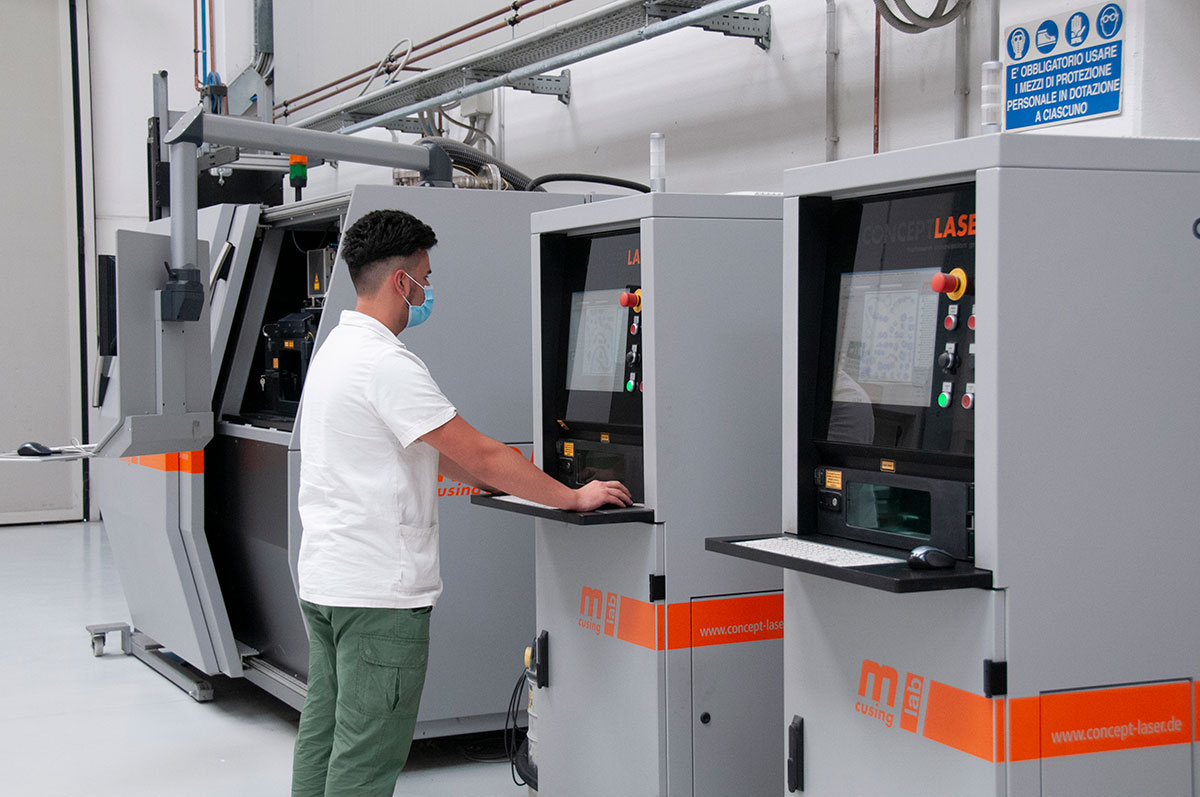
Of course it is always possible to send the Exocad file directly. In this case Proxera, after carrying out the verification steps, will only deal with the production.
Proxera verifies via dedicated software that the designed structure complies with the production parameters by checking the following:
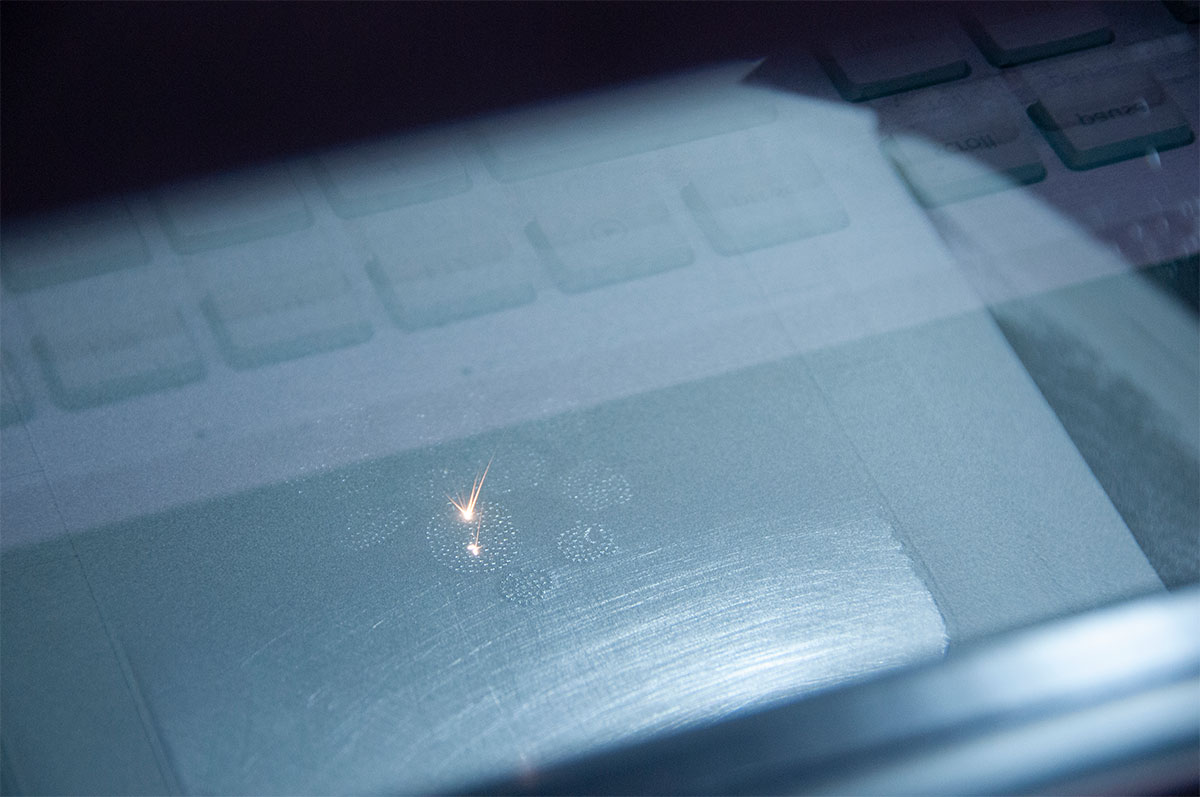
After all checks, Proxera proceeds to the production of the partial denture in Laser Melting.
Once the production is completed, the heat treatment is carried out in the furnace for the stabilization of the metal.
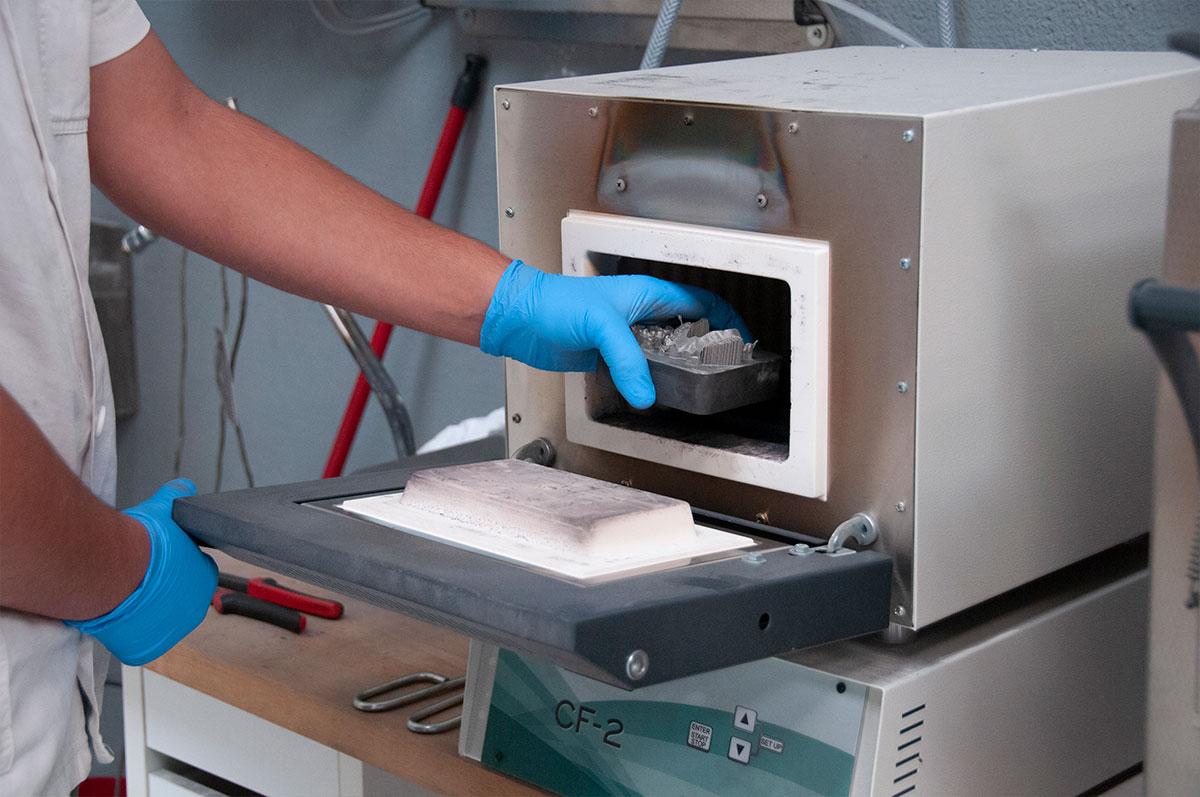
The partial denture is then removed from the manufacturing platform to proceed with the elimination of supports and marks via micromotor and tungsten burs. The partial denture is finally sandblasted using alumina powder.
The finished partial denture can also be polished and in this case the “best-fit” test is followed by performing a scan with a 3D measuring arm.
The partial denture is then ready to be packed and shipped.
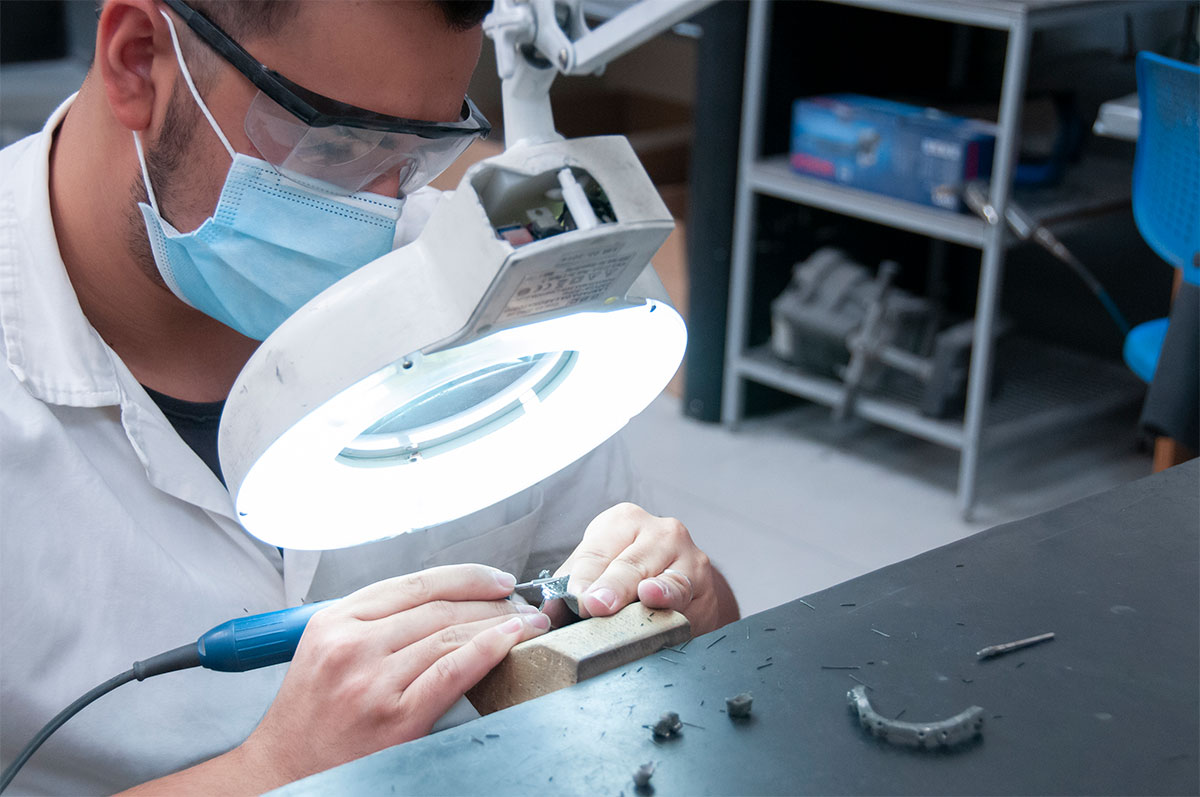
The digitalization of production processes ensures efficiency, quality and repeatability. The processes are studied and tested in order to guarantee and standardize the result, putting in place production methods that meet the needs of structures that, like partial dentures, require special care to ensure elasticity, strength and durability.
© Copyright 2021. All Rights Reserved. Proxera S.r.l. - Via Marchesi, 1 - 42022 Boretto (RE)
C.F. / P.IVA / Reg. Imp. RE 02741880351- R.E.A. 309389- Cap. Soc. € 30.000,00 i.v.a.
Information on the processing of personal data | General terms of sales | Cookies Policy